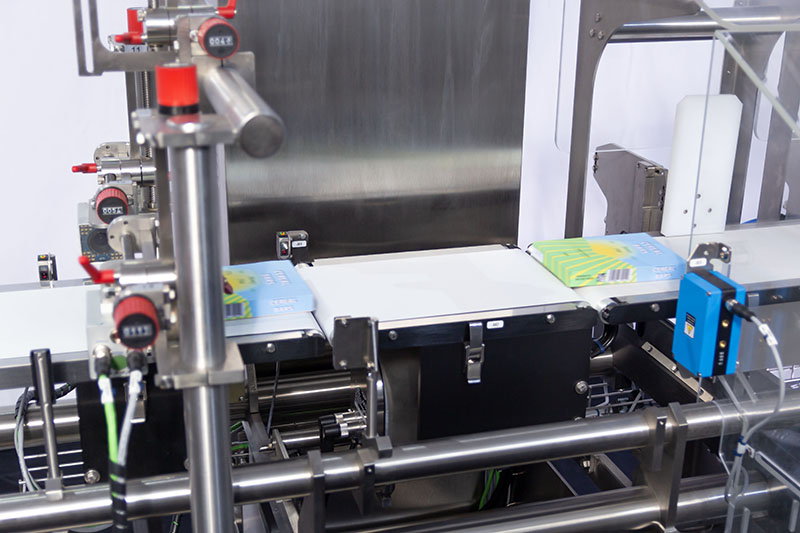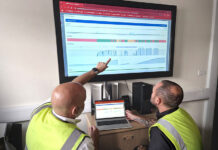By Neil Gruettner, business development manager, vision inspection, Mettler-Toledo
Carton applications are the backbone of diverse industries, from the comforting aroma of freshly baked biscuits to the soothing warmth of a cup of tea, and the tantalising flavours of pasta and bakery delights. However, with escalating costs and stringent regulations, manufacturers encounter significant challenges in maintaining efficiency and accuracy in carton packaging. In this article, we look at the complexities of carton packaging applications and explore how combination product inspection solutions can combat rising costs effectively.
Cost Perspective
The implications of errors in carton applications are not merely financial; they extend to operational efficiency, resource management and brand integrity. Operation checks, traditionally conducted through sample checks, are inherently limited and expensive. The more production lines a manufacturer operates, the higher the costs associated with manual checks, amplifying the financial burden.
Moreover, the timing of error detection significantly impacts cost. Delayed recognition of quality issues results in increased waste and higher expenses. When non-conforming products are identified late in the supply chain, the consequences worsen. Recalls become inevitable, leading to costs in terms of product retrieval, rework and potential fines.
Reasons for Concern
Labelling errors and incorrect fill levels stem from various sources, including operational errors and equipment malfunctions. These errors not only result in regulatory non-compliance but also jeopardise product quality and consumer safety.
The repercussions of non-conforming product entering the marketplace manifest most notably in recalls, but potentially also harming the end consumer. Product recalls not only incur direct financial expenses but also carry the risk of incurring substantial fines from retailers, often amounting to billions, or loss of contracts.
Furthermore, recalls inflict severe damage to brand reputation. Consumer trust is eroded, resulting in altered buying behaviours and decreased turnover. The combination of high costs and brand damage creates a detrimental cycle, further exacerbating financial losses.
In essence, the financial toll of errors in carton applications extends far beyond immediate expenses. Delayed error detection amplifies costs, diminishes brand value and erodes profitability, underscoring the critical importance of proactive quality control measures.
Regulatory Compliance
Filled cartons must meet stringent weights and measures legislation, such as pre-packaged goods legislation, for accurate measurement and labelling to maintain fair trade practices. Regulatory requirements, including the EU Directive 1169/2011, US Food & Drug Administration (FDA) regulations and Natasha’s Law Guidance in the UK, mandate precise labelling of product contents, nutritional information and allergen warnings, crucial for consumer safety and transparency. Compliance with these regulations is imperative to protect the consumer against incorrect labelling, avoid severe penalties, including fines and legal consequences, while also preserving brand reputation.
Manufacturers must employ robust quality control measures, including inspection systems, to facilitate adherence to regulatory standards and mitigate risks associated with non-compliance, safeguarding both consumer safety and market competitiveness.
Three Steps to Combat Rising Costs
So, the next logical question is what can manufacturers do? There are three easy steps to combat rising costs in carton applications:
- 100% Automated Inspection: Transitioning from manual spot checks to fully automated inspection processes of cartons reduces costs significantly while enhancing accuracy and efficiency.
- Earlier Detection: Integrating inspection systems at an early stage in the production process of carton applications means errors are identified and rectified promptly, minimising downstream repercussions.
- Combination Inspection Solutions: Leveraging combination checkweighing and vision inspection systems offers a comprehensive approach to quality control of carton applications, reducing the total cost of ownership and enhancing operational efficiency.
Gatekeeper: Combination Inspection System
Putting the above into practice, manufacturers can implement a “gatekeeper” of sorts, in the form of a combination inspection system. This smart solution integrates checkweighing and vision inspection functionalities, providing 100% automated inspection to detect errors promptly. By serving as a comprehensive quality control checkpoint, inspecting each filled carton in real-time, at high production speeds, the combination system acts as a safeguard against costly errors and meets compliance with regulatory standards.
Benefits of Combination Inspection
- Streamlining: Combination inspection systems provide numerous benefits. These systems are designed with shared components, streamlining maintenance efforts and reducing the need for duplicate parts. By consolidating inspection functionalities into a single unit, manufacturers benefit from simplified maintenance procedures and decreased costs associated with component management.
- Reduced space: Moreover, their space-saving design optimises floor space within production facilities, addressing the challenge of limited workspace. This efficiency in layout allows for more streamlined operations and enhanced productivity across the manufacturing floor.
- Increased operatory efficiency: Equipped with user-friendly interfaces and standardised operating procedures, these systems empower operators to perform tasks with greater ease and speed. This enhanced efficiency translates to smoother production processes and reduced labour costs.
- Early detection of carton issues: The incorporation of light barrier sensors also enables early detection of open flaps in carton seals, preventing production line stoppages and minimising associated expenses. This proactive approach to maintenance also protects valuable equipment, meaning uninterrupted production and minimising repair costs.
- Improved product quality: Furthermore, the integration of checkweighing and vision inspection capabilities means comprehensive error detection of individual carton applications. This results in minimised inaccuracies in product weight and packaging integrity, ultimately leading to higher product quality and increased consumer satisfaction.
- Cost savings: In addition to improving accuracy and efficiency, combination inspection systems deliver substantial cost savings. By reducing errors and operational disruptions, manufacturers avoid expenses associated with rework, product recalls and equipment downtime, thereby bolstering their bottom line.
Conclusion
In conclusion, combating rising costs in carton applications requires a proactive approach to quality control and inspection. By implementing advanced combination inspection solutions and adhering to regulatory requirements, manufacturers can mitigate risks, combat rising costs and offer consistent product quality. Embracing automation and integrating combination systems at the end of the production process are pivotal steps towards achieving operational excellence in carton packaging.













